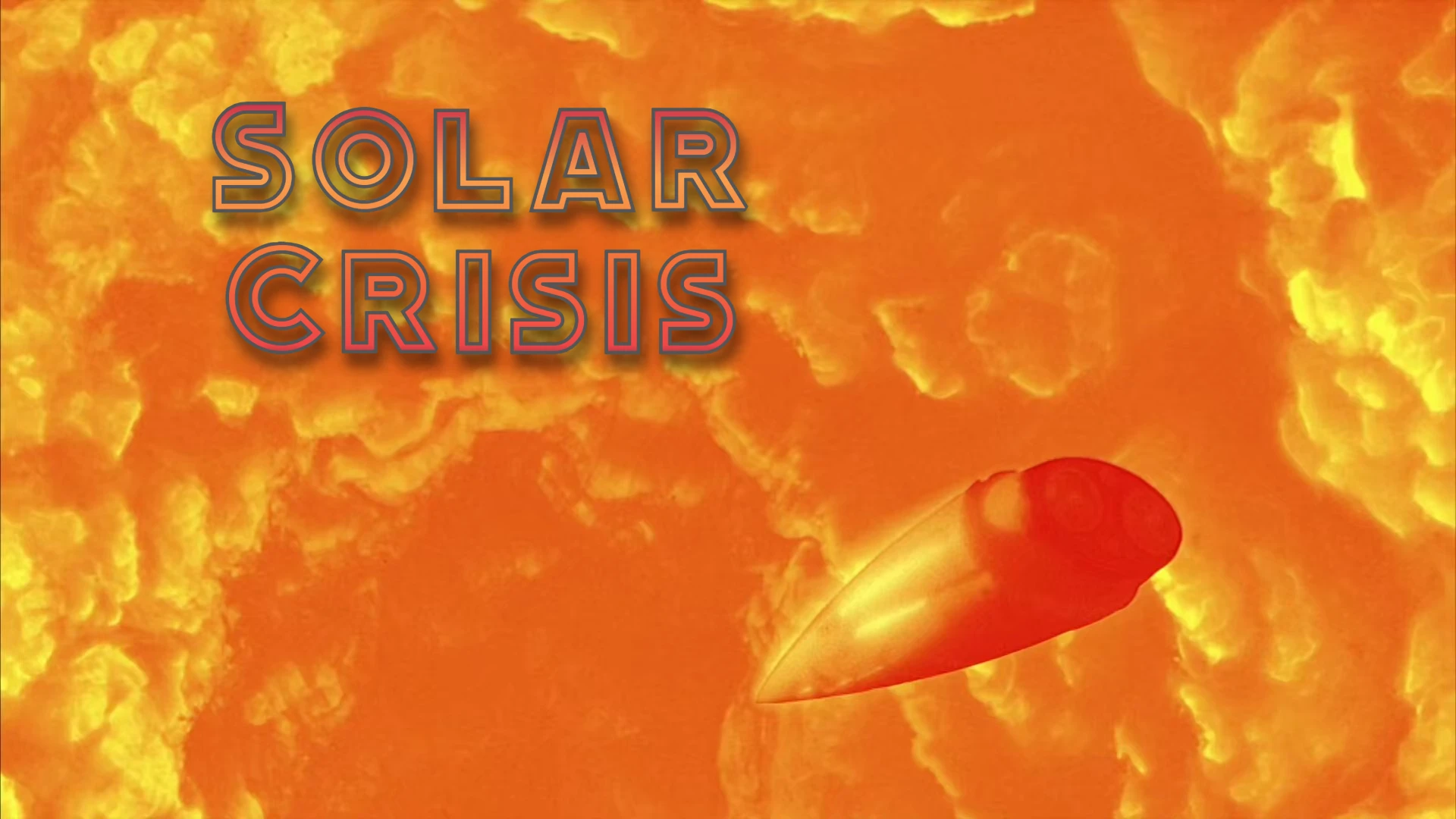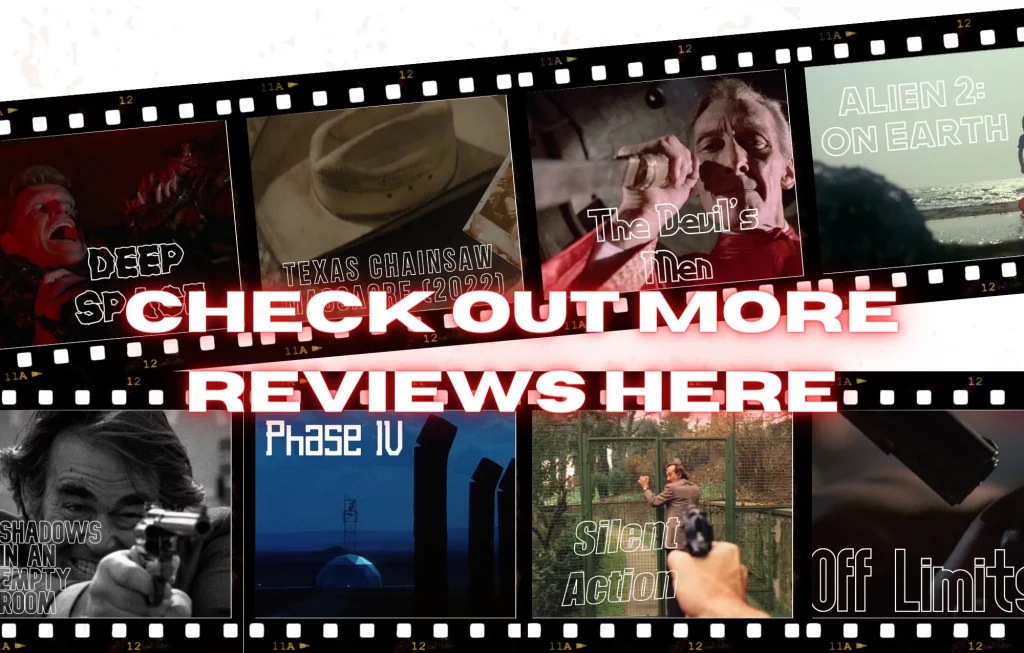A title that appeared on the video shelves with little warning in the early 90’s was Solar Crisis. As a young lad of 13 I was instantly drawn to the cover featuring a spaceship, space station, a burning star and some familiar names. A bold tagline promised excitement and a statement regarding the special effects team hinted at eye popping visuals.
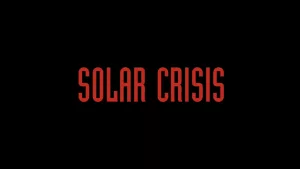
This was a Saturday or Sunday afternoon watch for me, I couldn’t wait. Running down the hallway to the living room I told my father that it starred Charlton Heston, Jack Palance and Peter Boyle, a cast he must have found irresistible as he joined me, which was incredibly rare. We sat and watched a good portion of the movie together, however mid-film, he excused himself to slip away and do something, anything, else. Whereas I persevered and ultimately enjoyed the slow moving, sci-fi silliness.
The final film, directed by Richard C. Sarafian, must have put him off the directing job as he gave up after this release. Over this career Sarafian had seen decreasing success since the early 70’s when he made Fragments of Fear and Vanishing Point. The infamous Alan Smithee pseudonym is used as Sarafian removed his name from this film.
Solar Crisis has become vastly more interesting over the years. The curious path to release is something that is not particularly well documented. According to some sources the film initially cost $30 million, which isn’t huge, roughly similar to Star Trek V the previous year. Although this a lot higher than your standard direct-to-video sci-fi movies.
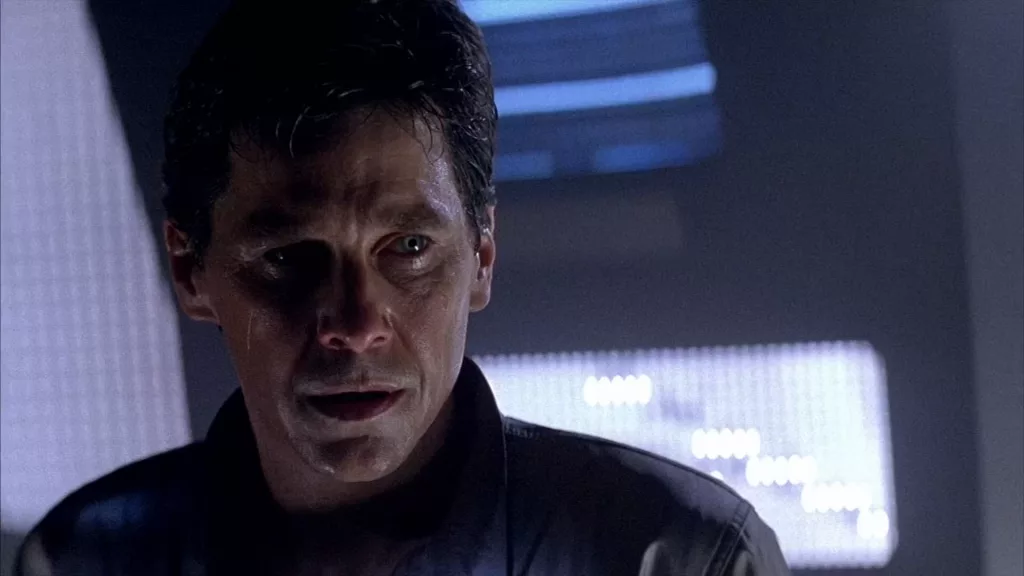

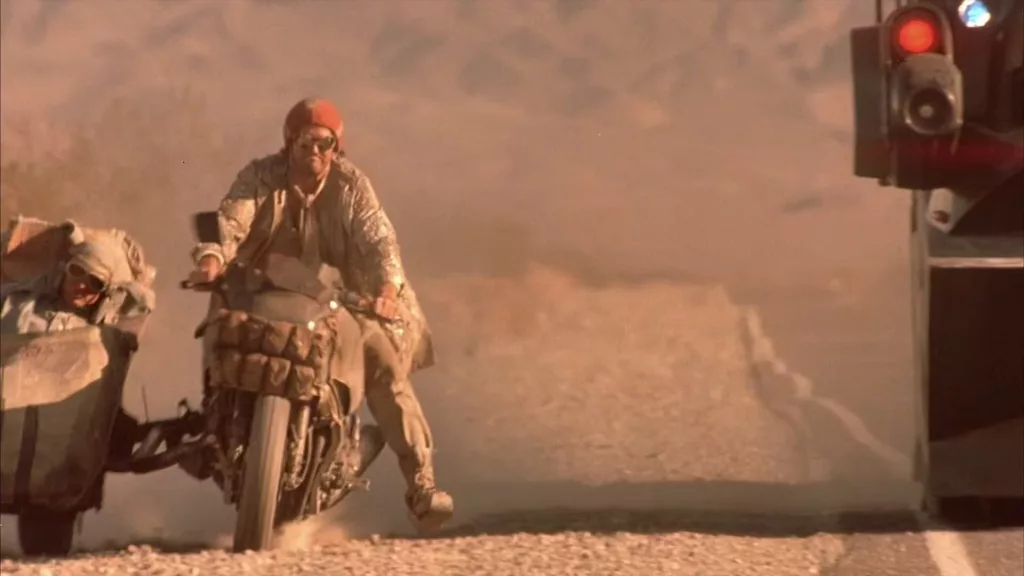
There is a story that the original cut of the film was released in Japan where it flopped and was quickly pulled from release. There are a handful of reviews of this cut and they are somewhat positive. A further $15 million was dumped into the film for re-shoots and it was re-edited for its American release. This is likely the time Sarafian distanced himself from the project as the Class of ‘74 director Arthur Marks was brought in to helm the re-shoots.
The film is divided into three story threads, to distinguish them I have labelled them appropriately – The Matheson Mission, Mad Jax and Boyle’s Business. The three story threads link three generations of the Kelso family, from Grandpa Admiral “Skeet” Kelso, played by Charlton Heston, his son Captain Steve (Tim Mathson) and grandson Mike (Corin Nemec).
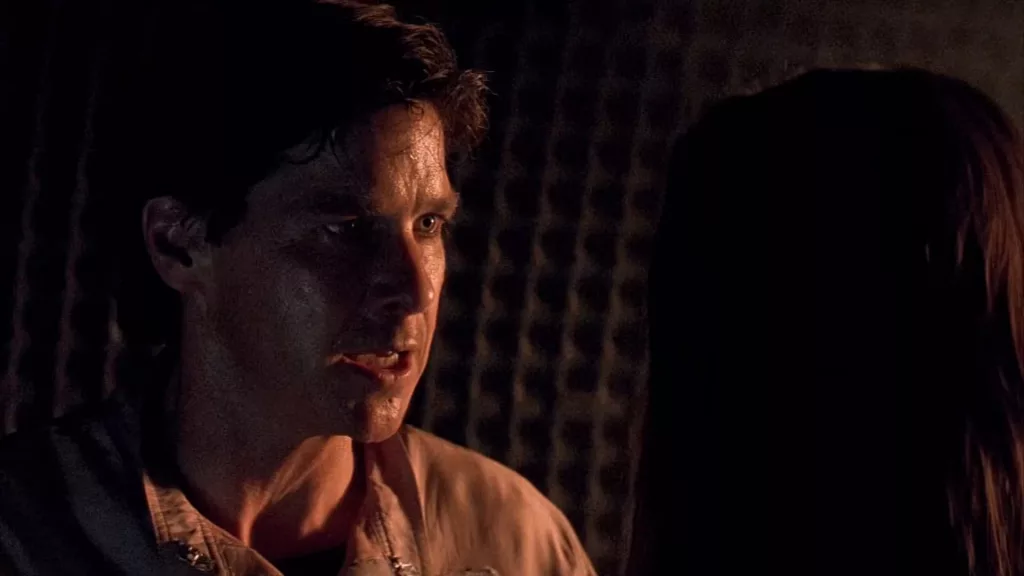
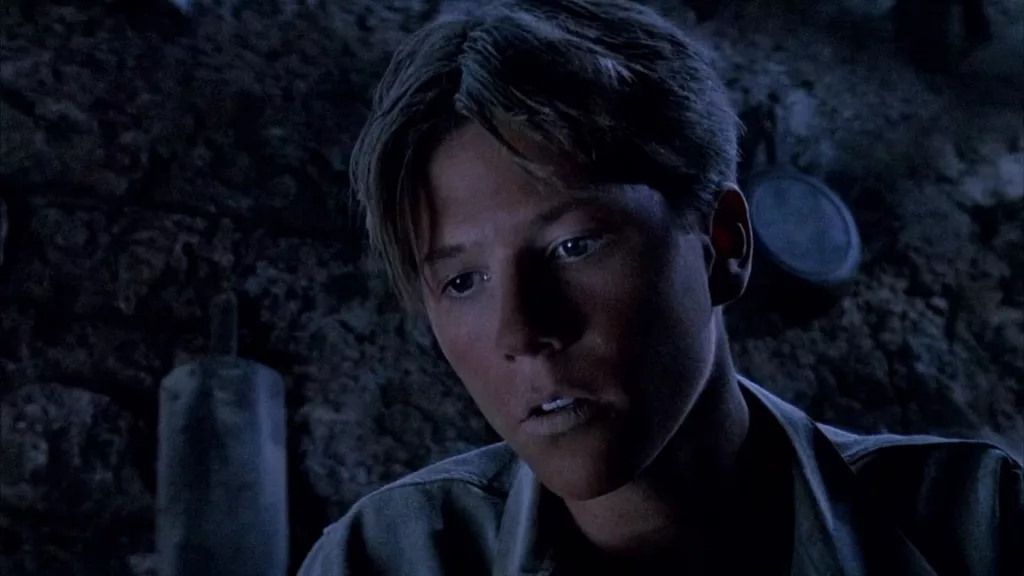
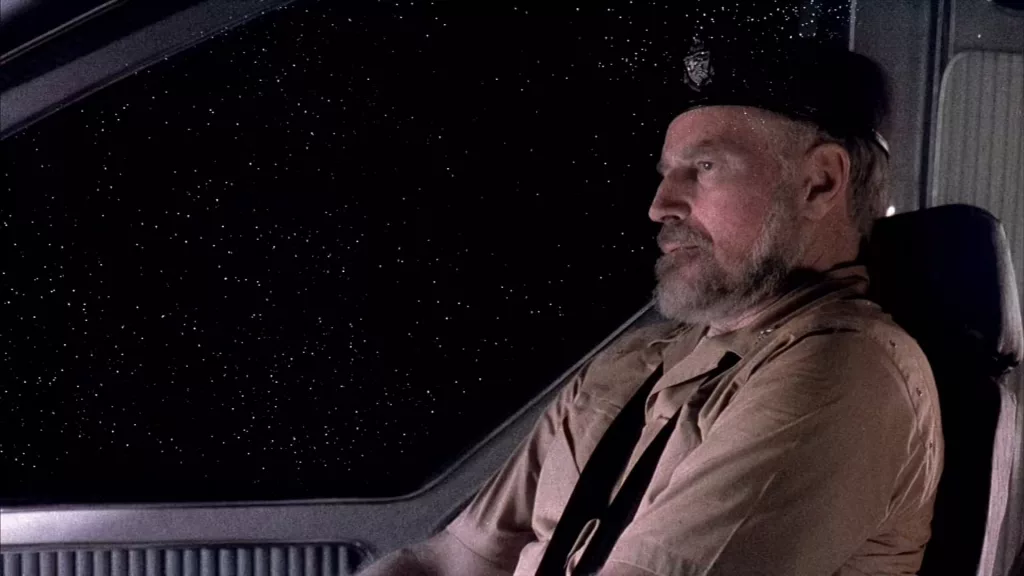
Starting with The Matheson Mission, the largest segment in the movie, is filled with those incredible special effects that, may have worked well in 1990, however, have not dated quite so well. They trounce the Star Trek V effects however. Compared to 2001 and Star Wars, films 20-30 years Solar Crisis’s junior, they are pretty disappointing.
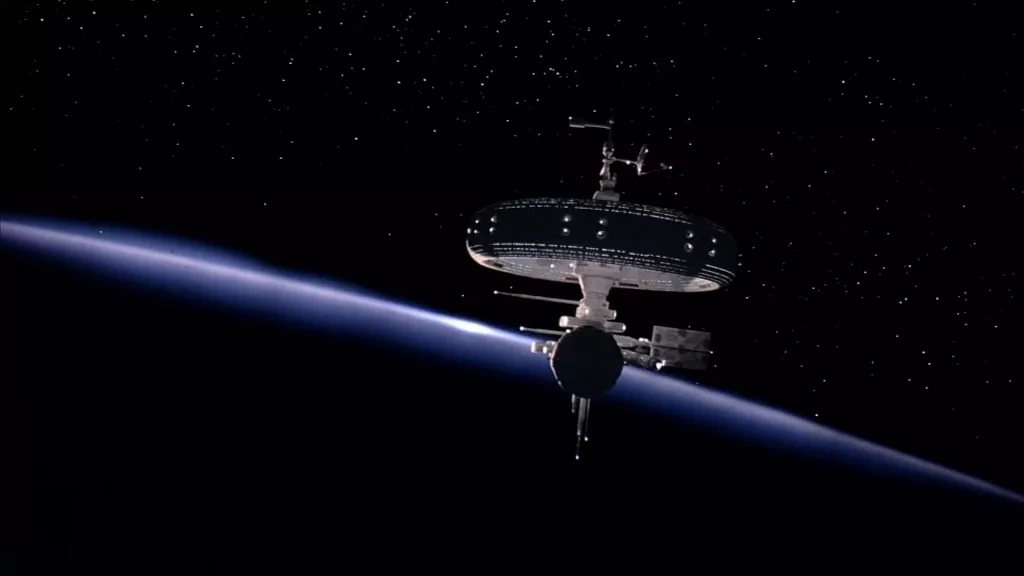
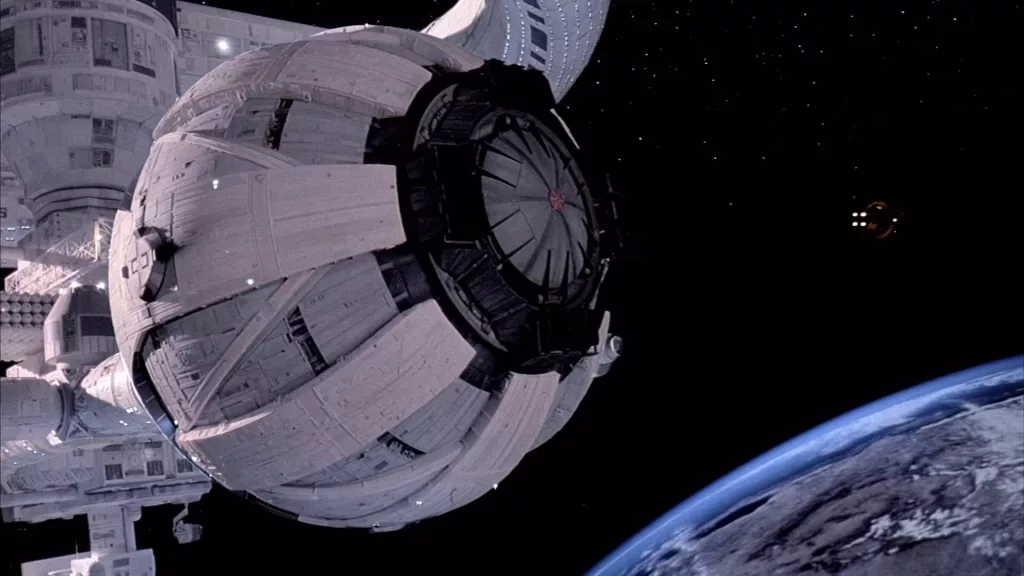
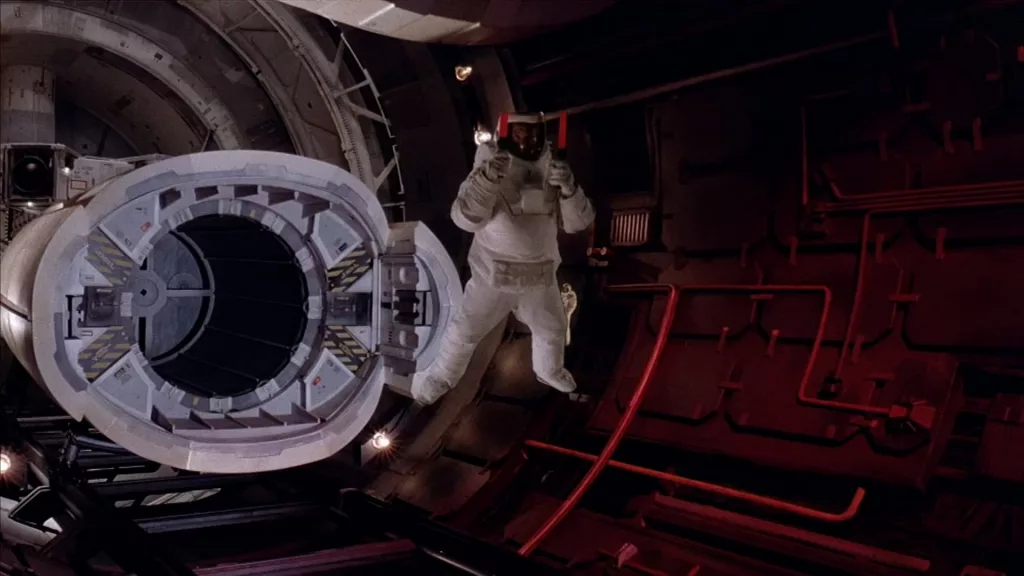
That said, I will give Solar Crisis a pass for the visuals as the spaceships become a welcome distraction from the poorly implemented 90’s TV movie sets that Captain Steve and his crew have to contend with onboard their ship, the Helios. Wobbly set walls have vents for lights placed behind them to shine through and dry ice floating in the air diffusing the light giving a dry and industrial feel, something that was all the rage on late night cable channel sci-fi movies.
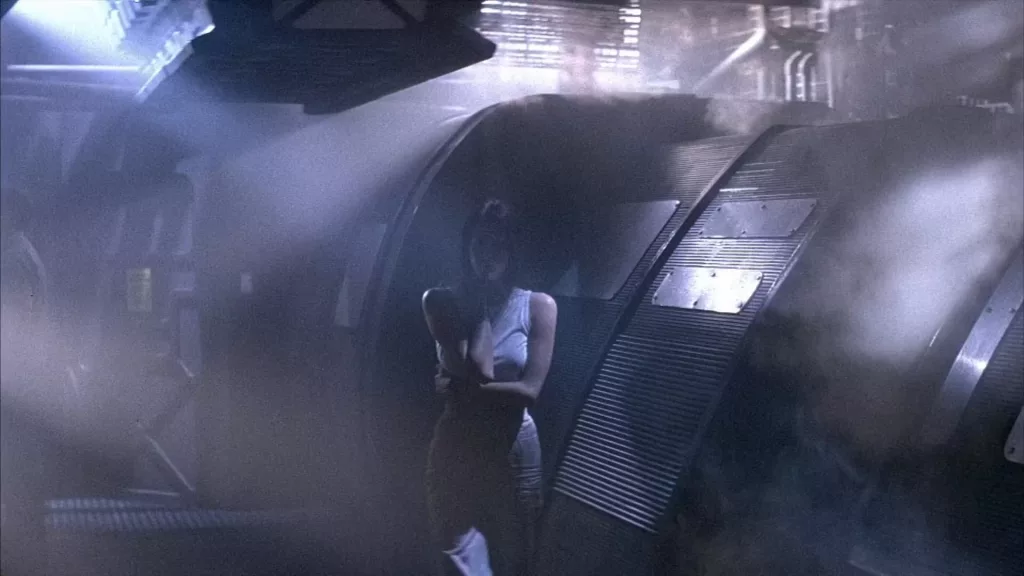
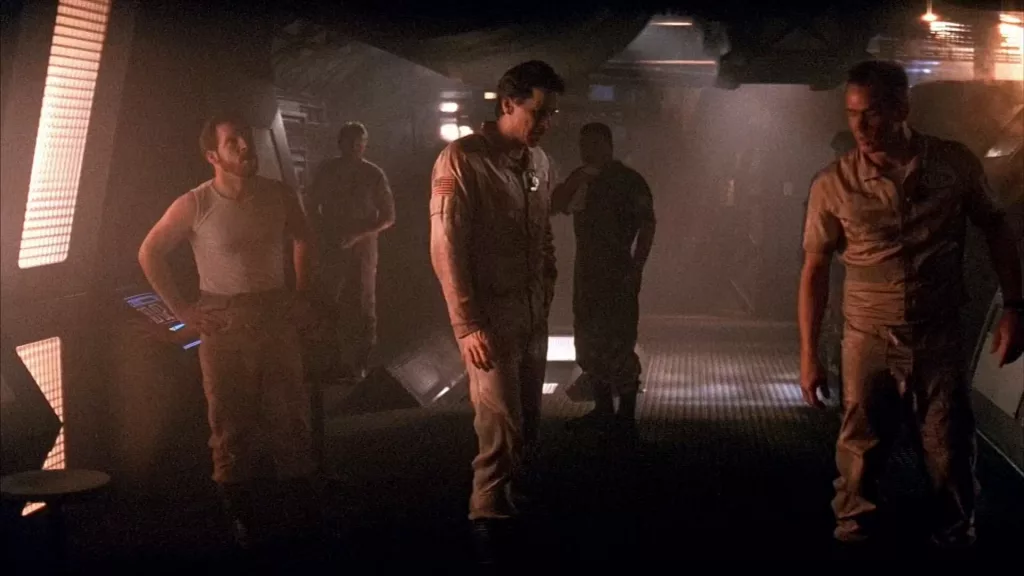
Each time we cut to the mission scenes onboard the Helios the cast are in a different room, we do not become familiar with a bridge arrangement or engineering bay. A radio voice will report that “the negative power coupling has ruptured” and Captain Steve has to dash from one dimly lit, smoggy, sweaty room to another, making a bold decision some of the crew do not like, only for another radio to rattle with problem and Captain Steve is off tending to another disaster.
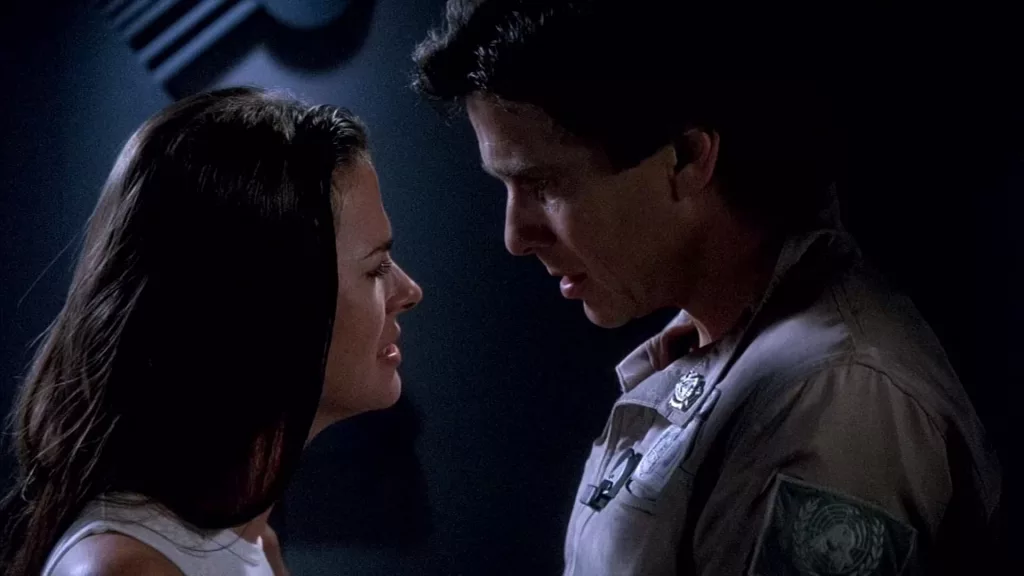
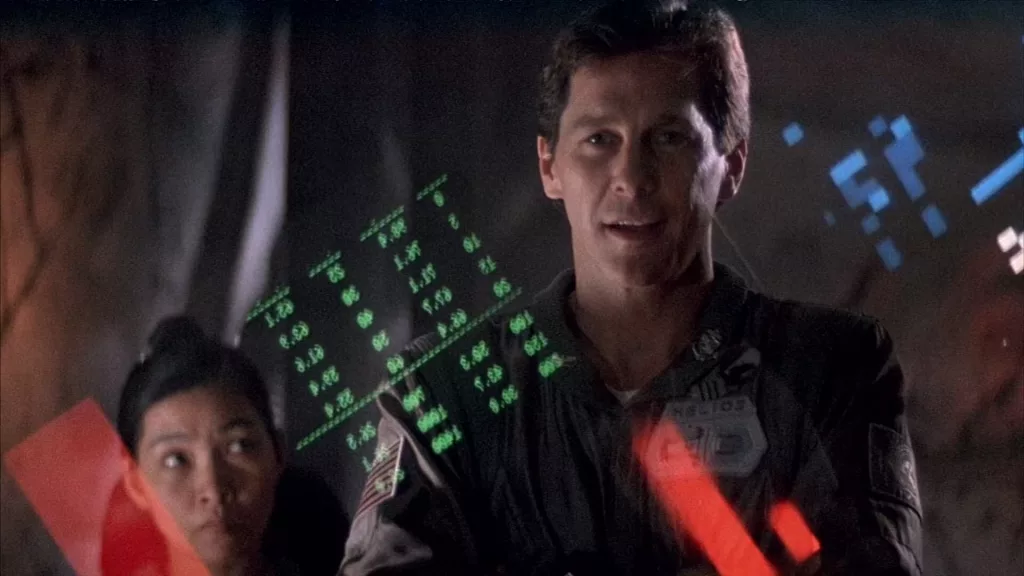

It’s worth commenting on Matheson as Captain Steve. I have to admit here that I am a fan of Tim Matheson and have watched a decent amount of his work to be able to distinguish him from his best known roles as a frat house hero in Animal House and Up the Creek. Matheson is fine, he does what he can with the limited character. In scenes opposite Heston and more dramatic moments as the film plods on he holds his own, despite not having much to work with. He has a dashing, hero captain look, however, the role does not call for it as Captain Steve is not scrapping with enemies or cracking wise like Kirk or Han Solo. A romantic subplot with Annabel Schofield’s genetically modified specialist Noffe provides a bit of a distraction from the end of the world scenario, however it’s inclusion feels a little inappropriate on a couple of levels.
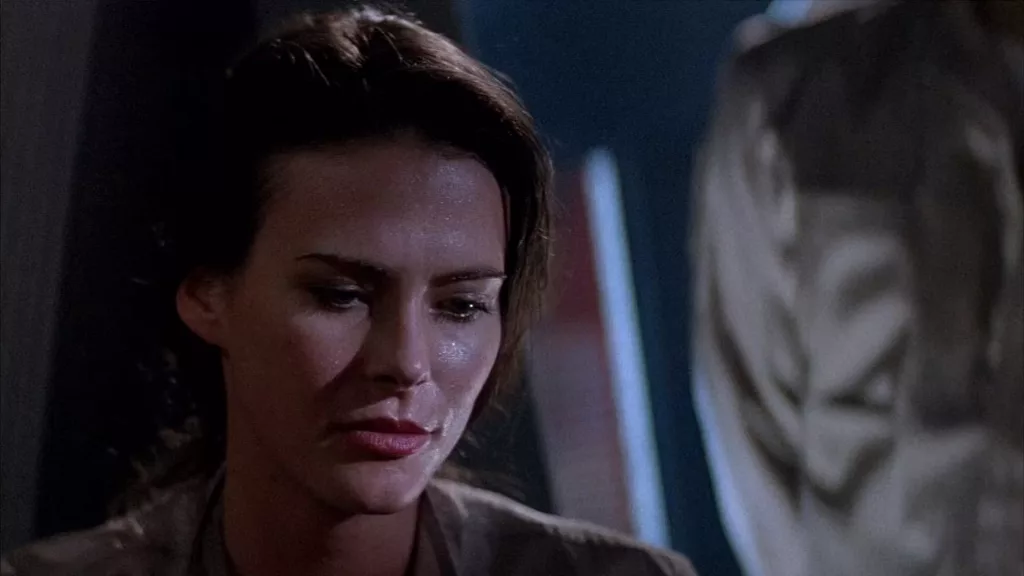
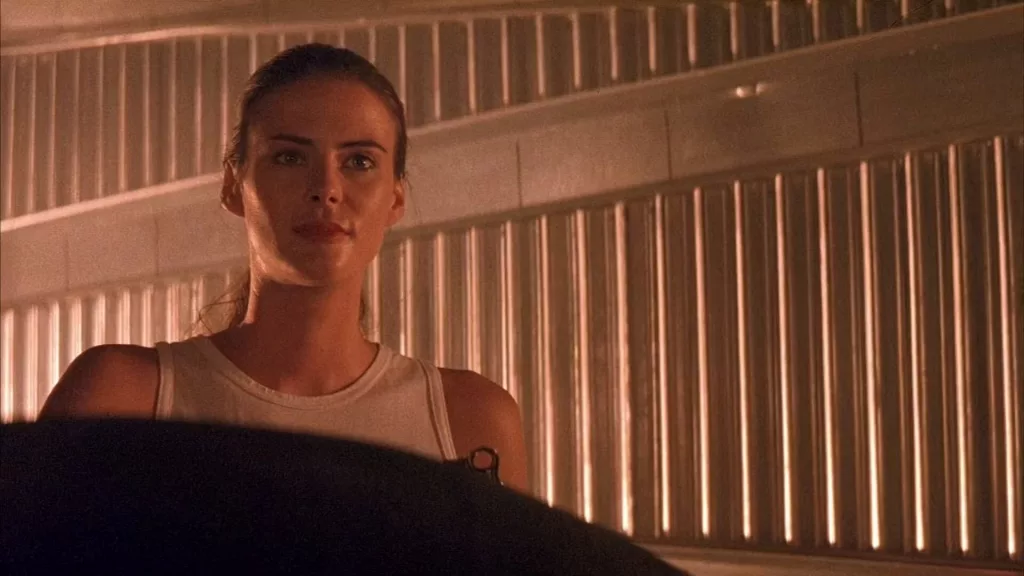
The rest of the crew are somewhat typical spaceship rabble. Each other has a particular personality trait to distinguish them, which is important as their uniforms don’t have names on them. Dorian Harewood plays Shouty crew member who gets annoyed by things happening, unruly crew members and the decisions Captain Steve makes. Richard Scott plays the Likeable Handsome Womaniser crew member who poses the biggest threat to Captain Steve’s romantic plans for Noffe and is ultimately sent to his death. Oddly this is Scott’s only credited role and he is one of the standouts, his spacewalk sequence is a particular highlight of the first half of the film.
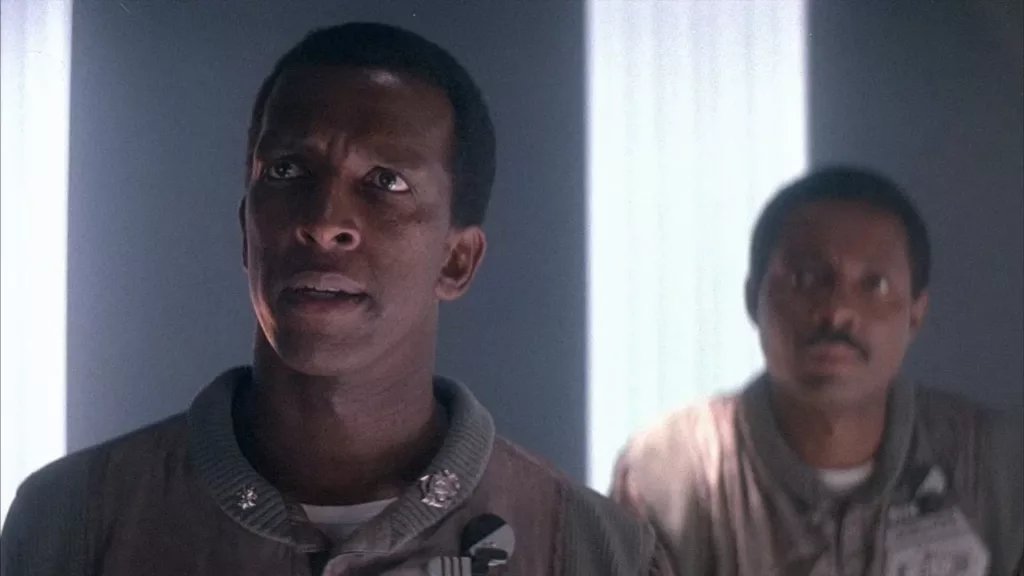

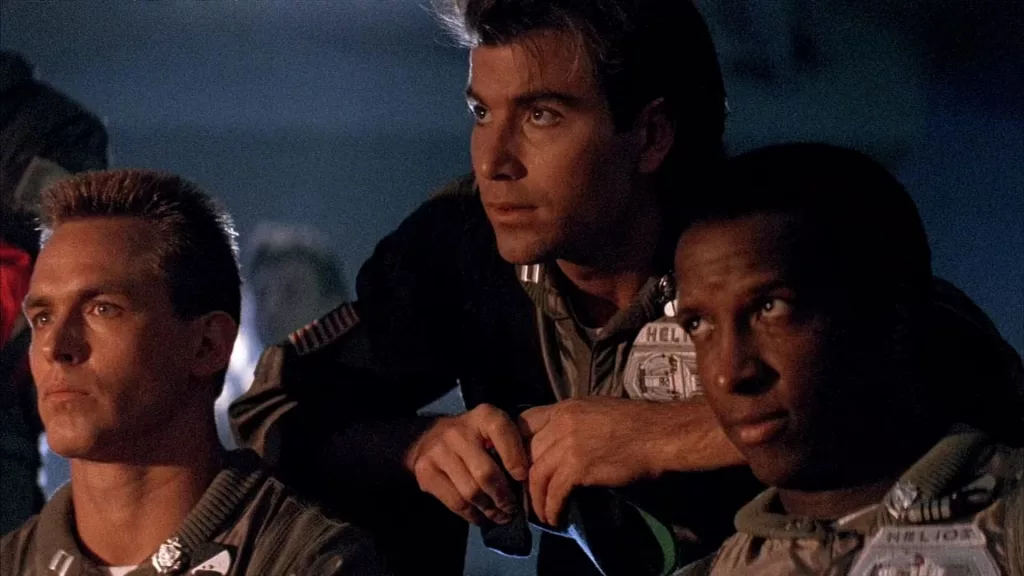
The Helios’ crew is rounded out by a talking computer bomb, voiced by Paul Williams. This one element will draw a lot of comparison with 2001’s HAL, however, equipping a bomb with a computer personality who likes to ask childish philosophy questions really amounts to very little in the grand scheme of humanity’s survival.
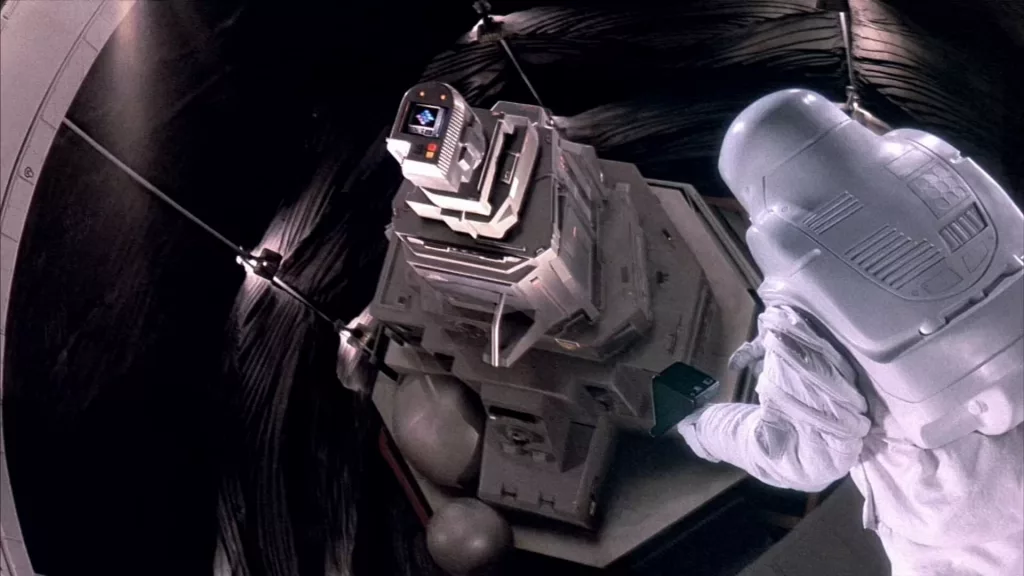
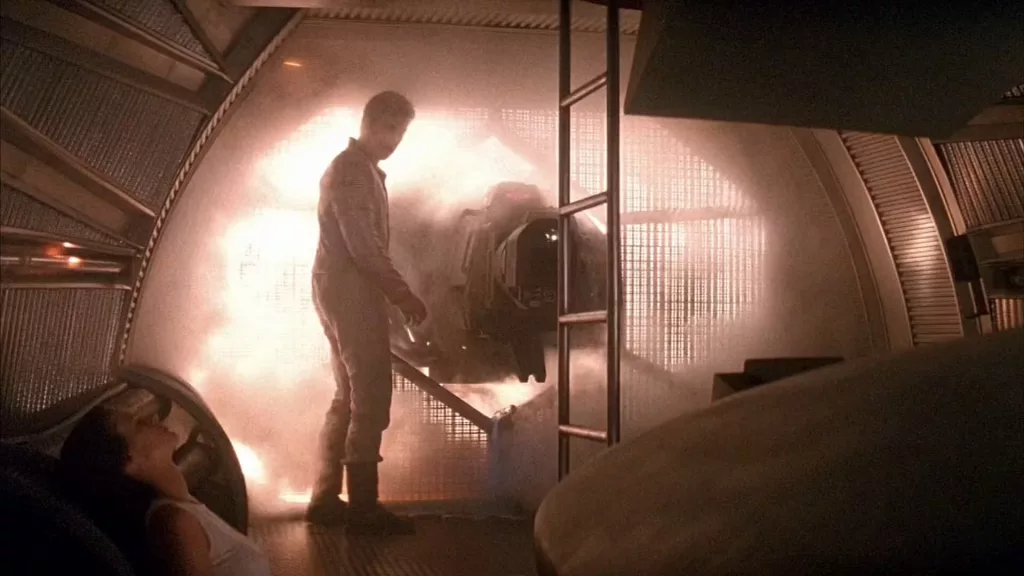
To contrast the dark visuals of The Matheson Mission, Mad Jax see’s Mike Kelso team up with Jack Palance’s Travis in a Mad Max style adventure across the desert wastes of Earth. Mike escapes from a military school in what appeared to the an A10 Tank Buster plane (a vehicle Heston continually refers to as a chopper) to say a poorly timed farewell to his father, who is already hurtling towards the sun. Palance plays an eccentric nomad who lends Mike a hand and makes this storyline thread farcically comedic as he ramps up the overacting to 11. Meanwhile Heston’s Skeet is scouring the desert looking for Mike, selfishly allocating every resource he can to the search for his grandson as humanity experiences potentially its last few hours before annihilation. As Skeet chokes on his fears his grandson might be dead one can’t help but feel the men he is dispatching would much rather be home with their families instead of combing a desert for his pain-in-the-ass grandson.
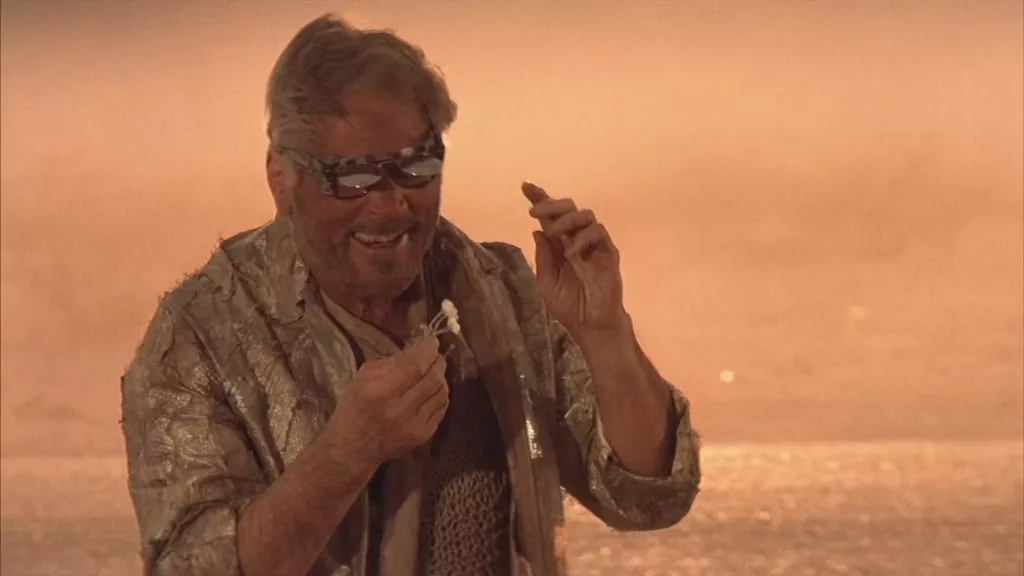
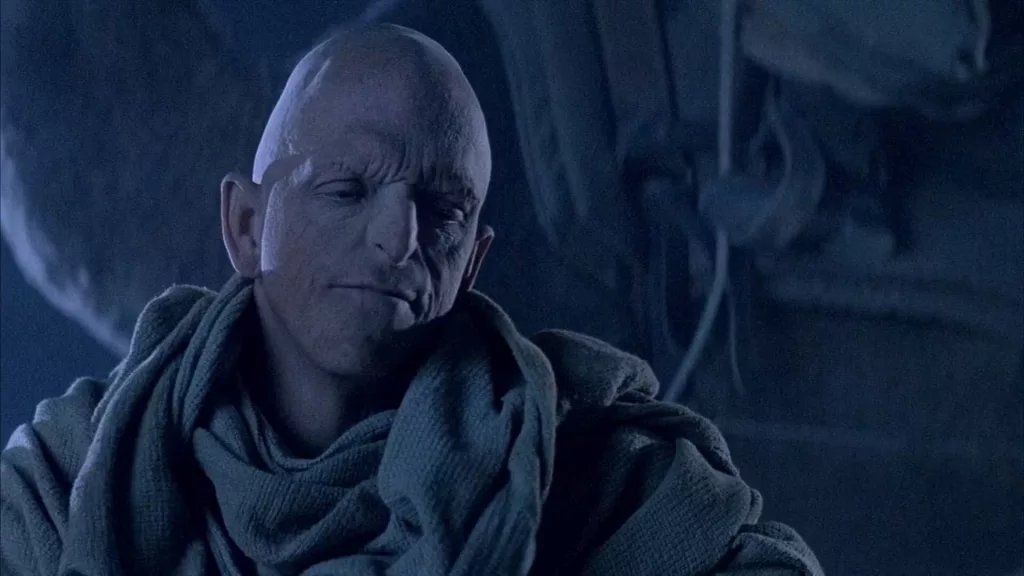
Boyle’s Business is a storyline thread that is massively incomplete. Peter Boyle plays Teague, the head of a multinational corporation. Channelling his typical villainous characteristics and spouting little speeches, Teague wants to see The Matheson Mission fail and is responsible for all the little problems Captain Steve is running around on the spaceship attempting to resolve. The problem is that at no point are we given a valid reason why Teague wants The Matheson Mission to fail. Perhaps a crucial scene was left on the cutting room floor during the reedit, or these were the scenes inserted during the reshoots with little concern for a coherent story other than to give the audience a villain. Bringing in an actor as good as Peter Boyle one might assume that there has to be a Bond villain style monologue somewhere to justify his efforts. Instead we get Teague’s confusing and disjointed warblings about water and humanity.


From what I can fathom Teague has bought up as much water and food as possible to sell it back to the desperate citizens of Earth at high prices and will hide in a bunker somewhere when the solar flare happens with Brenda Bakke and survive. Afterwards he will be a king and possibly re-populate the world with Bakke. Paul Koslo crops up as a crucial character to this story line that could have had one line that explained it all, but does not. Instead the character merely serves to illustrate how dastardly Teague can be.
Spoiler Zone:
Like Return of the Jedi, each story thread sees an “exciting” climax. Mike faces off against a Hemmingway spouting henchman on a outcrop of rocks well known to Star Trek audiences. Boyle’s Business is very underwhelming as Skeet blows Teague up as he escapes on ship. We don’t see Teague die, it is merely assumed, perhaps he was to return in a sequel, disfigured and out for revenge.

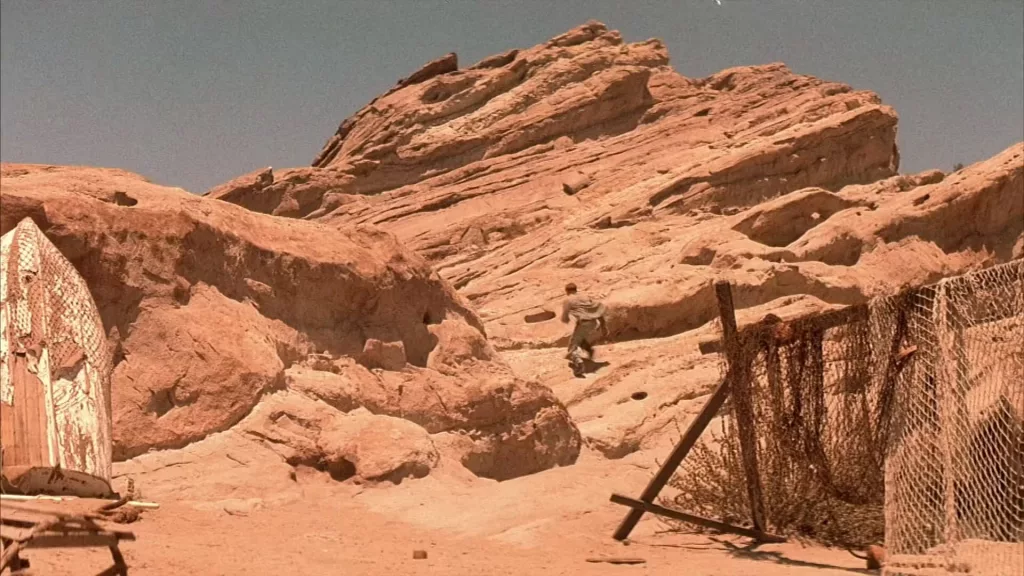
Finally, the climax to The Matheson Mission. This is the most egregious. The Antimatter bomb’s detonation sequence is activated in a final act of sabotage by Noffe, who has been tinkered with by Boyle’s Hemmingway spouting henchman. Following the involuntary treachery Noffe insists on piloting the bomb into the sun to stop the flare. She does, Captain Steve is upset at her sacrifice. People tell him “she’s gone.” Cut to black, role credits.
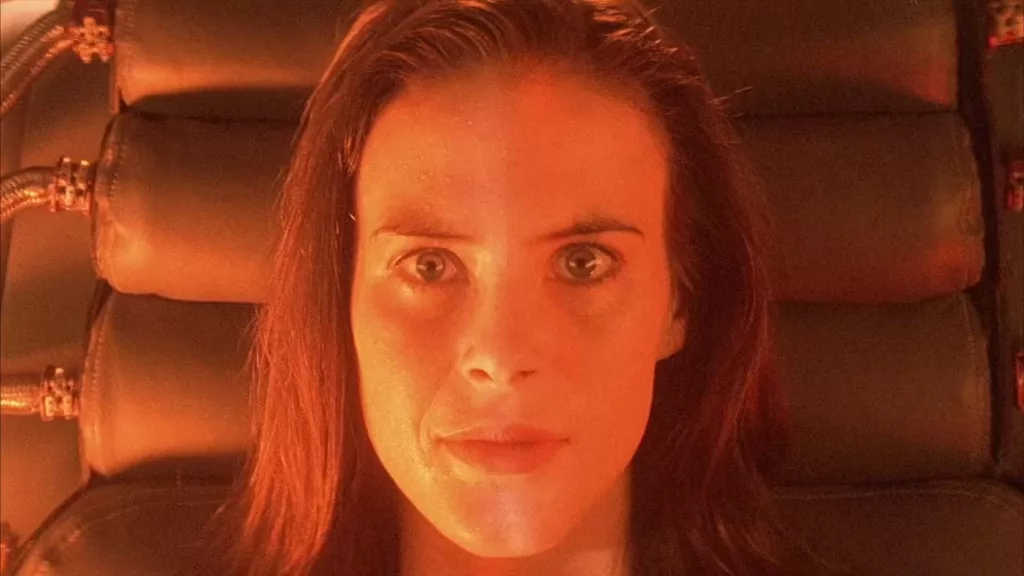

The final minutes of Solar Crisis leave the audience with a bad taste in their mouth. Following some arty fiery imagery opposite closeups of Noffe’s last moments we assume that the Earth is saved, by the dialogue “She’s gone.” For a film touting special effects, there are no ship shots or a visual explosion, merely Matheson’s chair rumbling as he stares across the room, a bit glum, possibly as he didn’t get to shag her. Skeet and Mike are forgotten about once they achieve their goals on Earth. The film is in a real hurry to end.
End of Spoiler Zone
One thing that is jarring is the music design. The film was torn up and re-edited, so some elements were kept and some replaced, however, the film seems to have two scores. One Synthesizer lead piece that seems to cover the majority of the film and a second full, competently arranged orchestral score that sweeps in during Noffe’s final moments and the film’s end credits. Mauriace Jarre of Lawrenece of Arabia and The Longest Day is credited as the composer, whilst Jarre is known for using both arrangement styles the two compositions feel a world, or solar system, apart and I can’t believe it’s the same composition. I have my feelers out for the soundtrack.
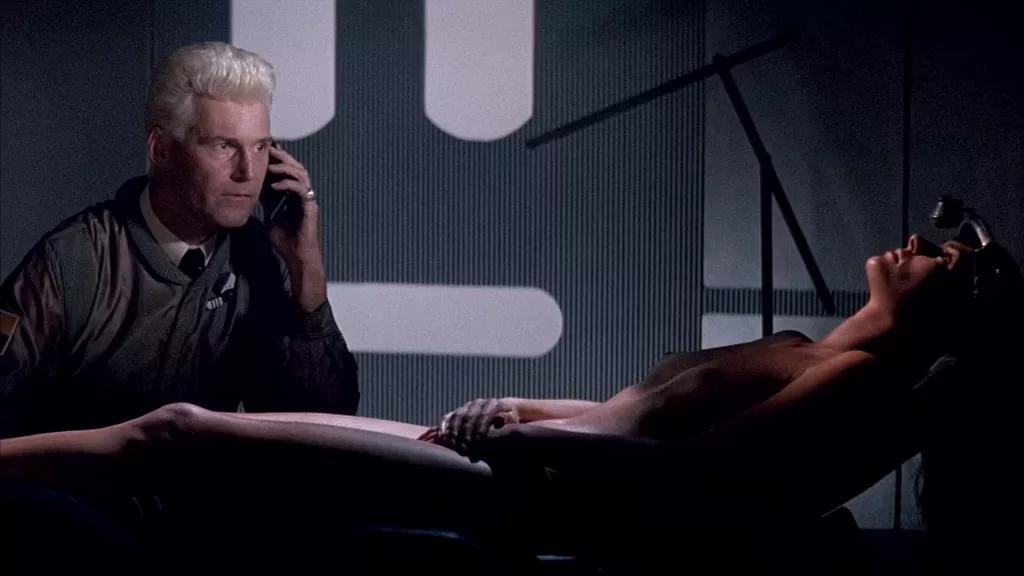

Another jarring notion is nudity. The film sits happily in a family safe zone for all but one scene. Far be it from me to question the necessity of seeing Schofield’s naked body, however, it merely drives away the younger generation who might have made the film more of a hit. Imagine the impact of a gratuitous boob scene in Star Wars.
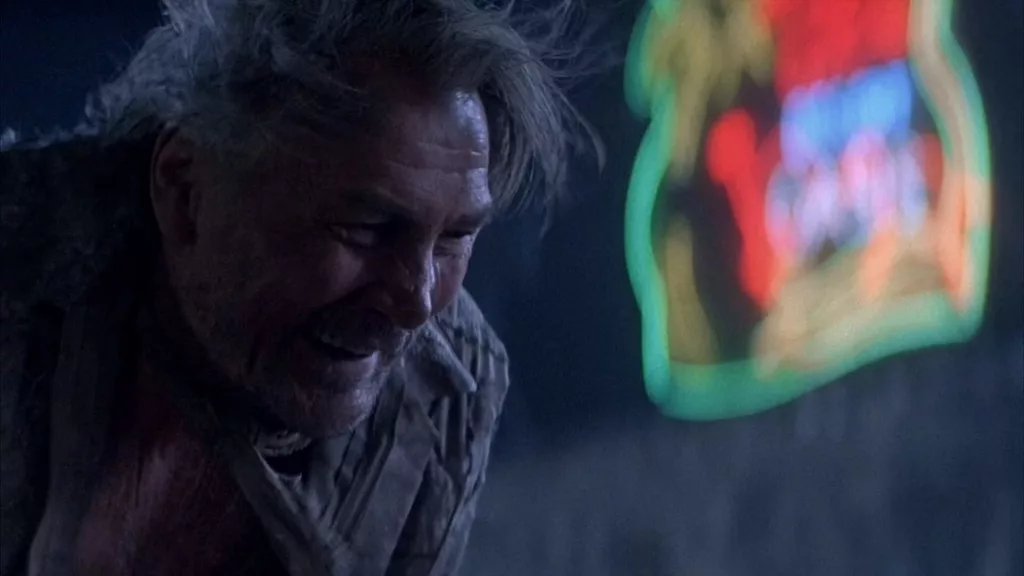
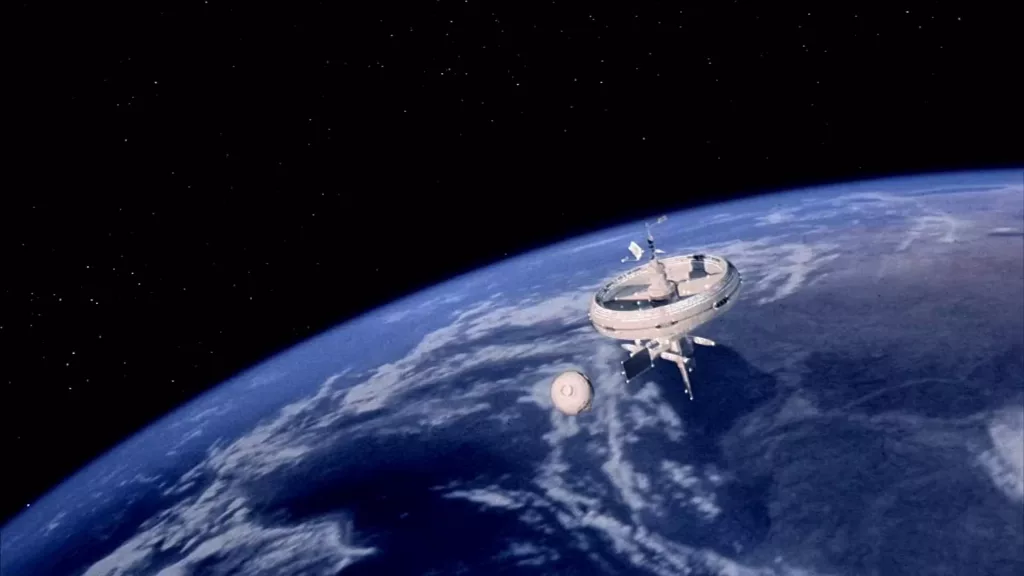
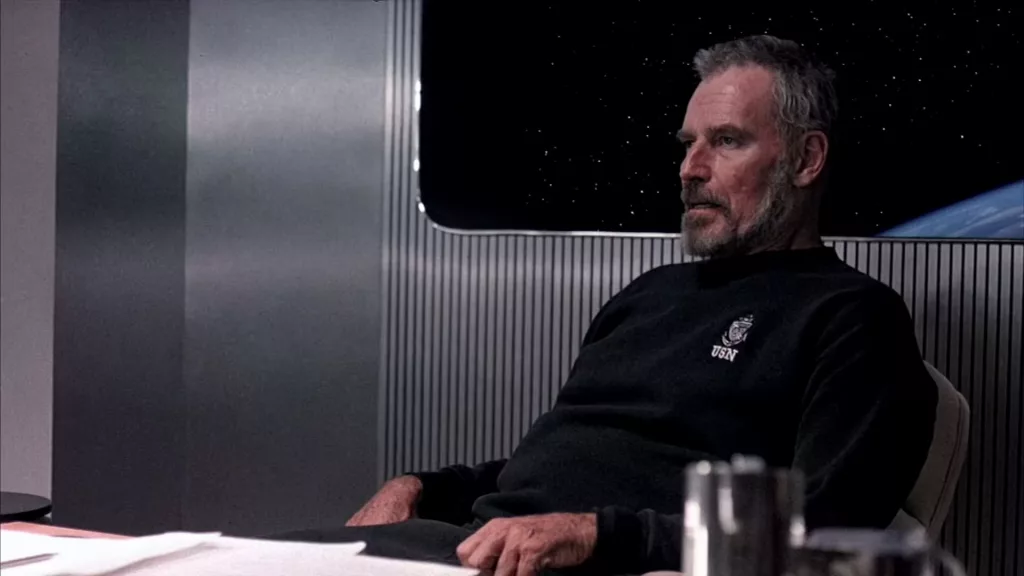
Solar Crisis is based on the novel Kuraishisu niju-goju nen (Crisis: Year 2050) by Executive Producer Takeshi Kawata. This seems to be his only output for movies and the novel remains unpublished, at least in the western world. The special effects are the big draw, they do work from time to time, and those that do can be seen again later in the film, reversed. The special effects can look a little jarring when used with real locations, when Skeet arrives at the bar Travis and Mike visited we see some pretty horrendously superimposed helicopters parked outside.
The story behind the film is a bit mysterious and rumours suggest that there is a better version out there, somewhere. I doubt we will ever see it. There does appear to be two cuts, one can pick up a DVD with Director’s Cut emblazoned across the top and features an image of Captain Steve in a spacesuit, something that does not happen in the movie. There is also a slightly longer cut on Japanese Laserdisc however, there isn’t much in the way of documented differences, and from what I can discern doesn’t contain Captain Steve going for a spacewalk.
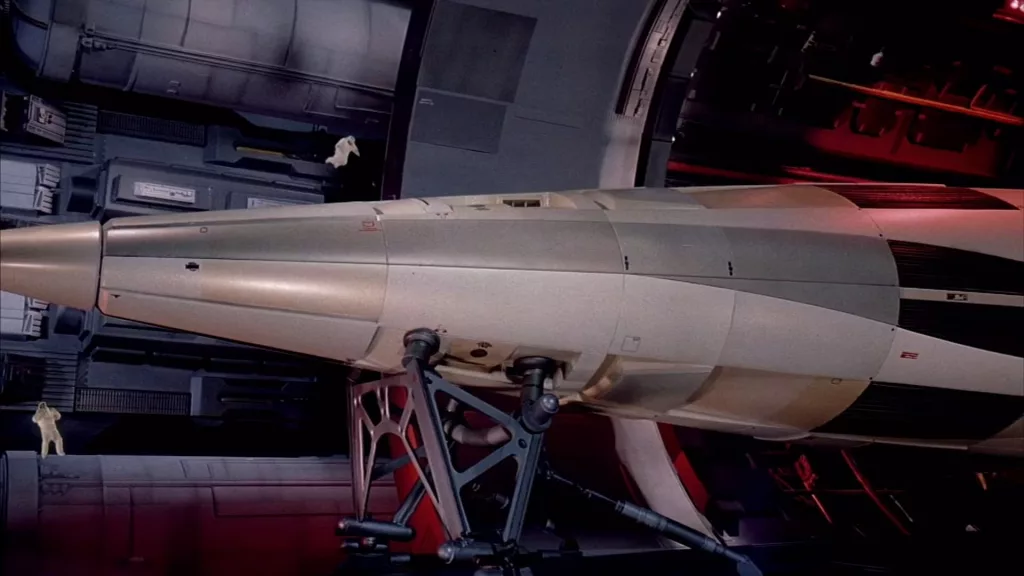
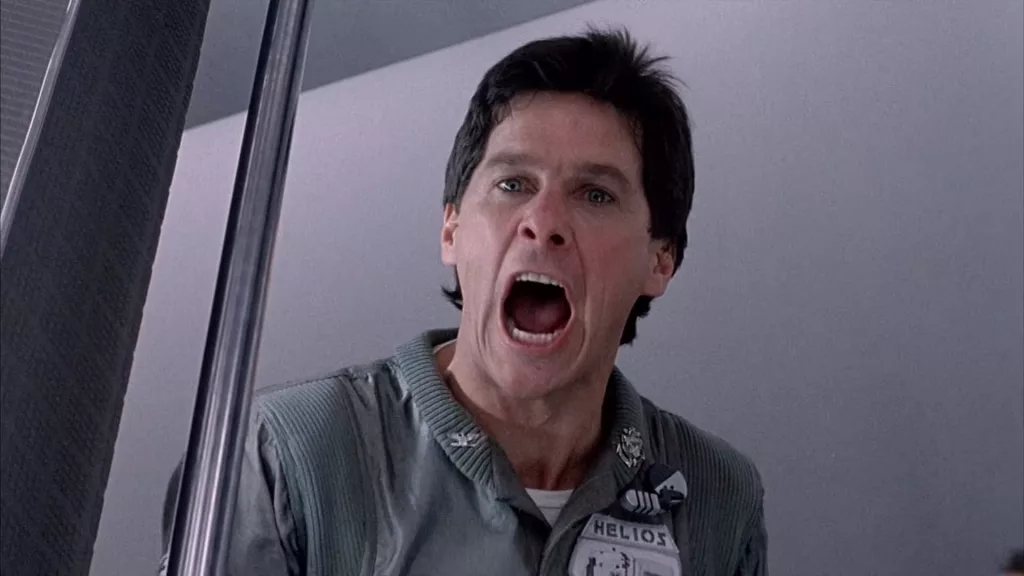
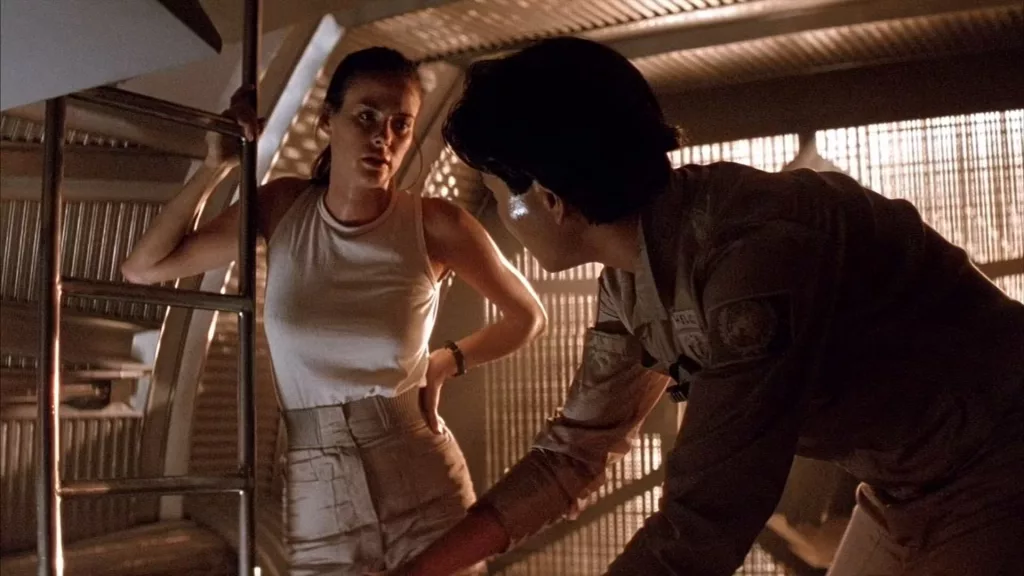
Solar Crisis is a mess and a waste. I like the film and, despite all the issues I raise, I enjoy it every time I watch it. It’s a laughably silly sci-fi that misses the opportunity to be fun and even action packed. The film sells itself on the special effects, which are equally impressive and unimpressive depending on your frame of mind. The big stars get to play unspectacular characters and must have joined the cast for an easy paycheck.
It’s worth noting that the trailer for Solar Crisis does not feature very much footage of the Mad Jax story and nothing of Boyle’s Business.
There are a few posters online for various releases over the year. The look a great deal more exciting than the final release of the film.
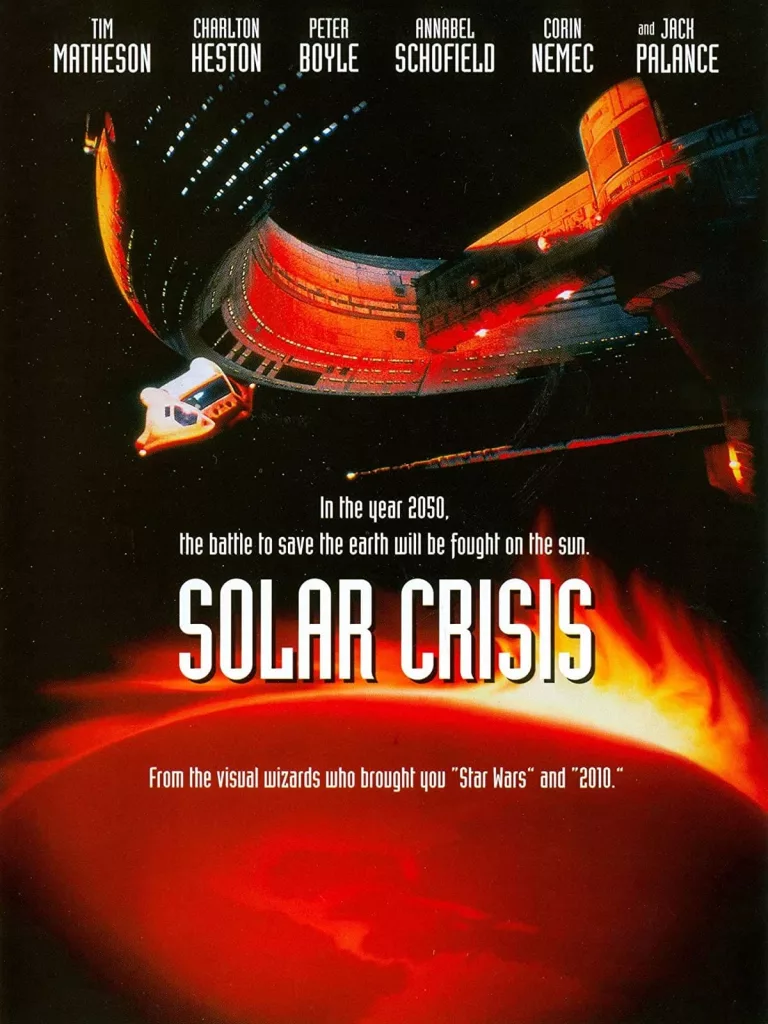
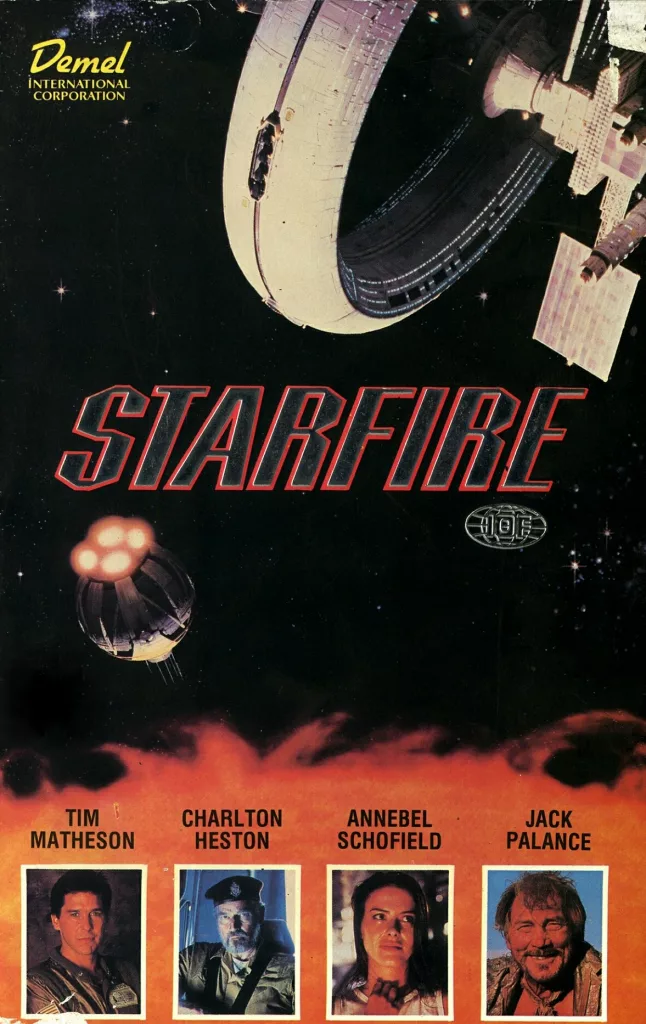
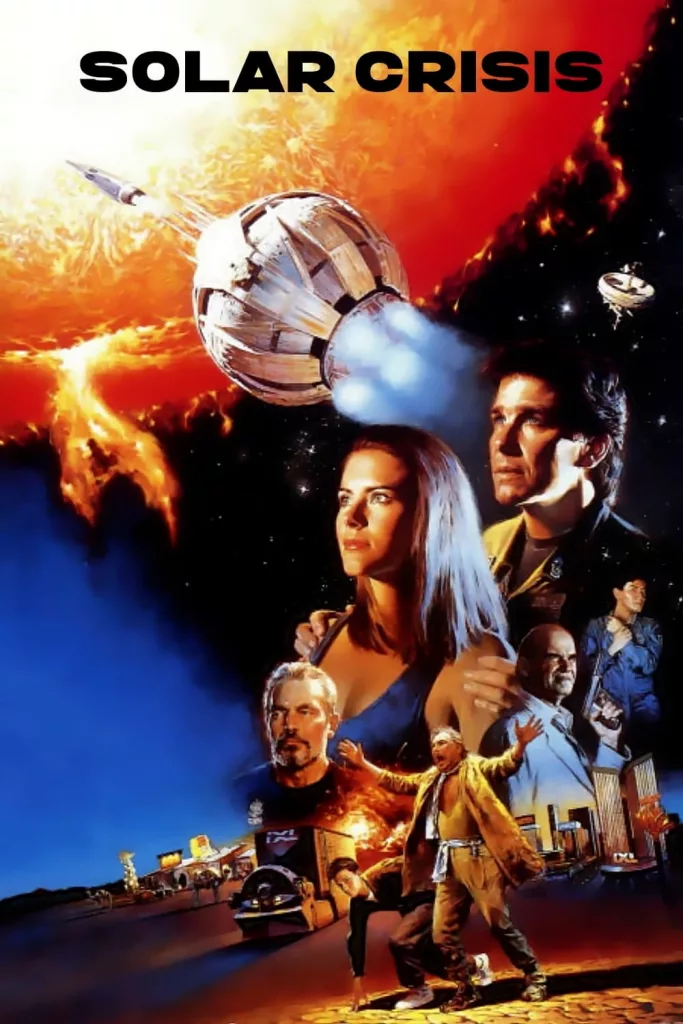
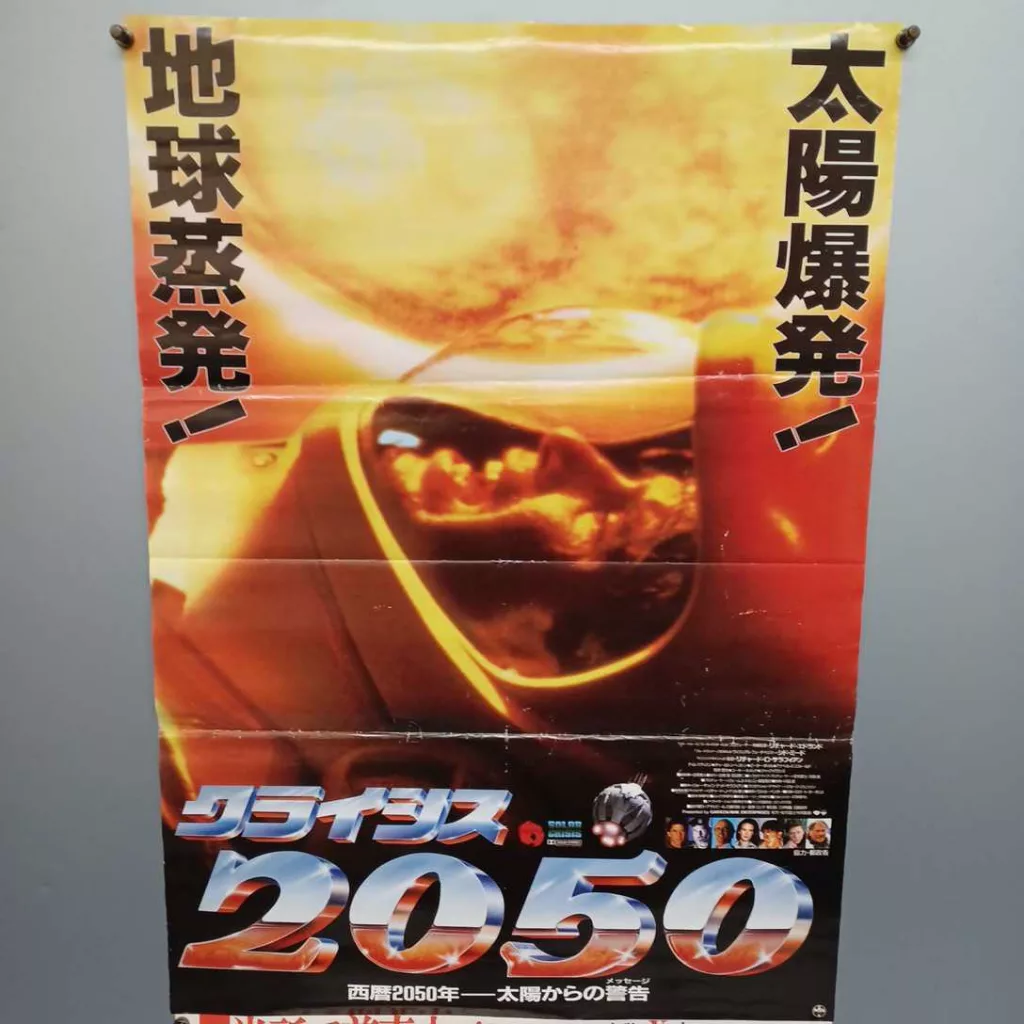
Solar Crisis is pretty easy to find. There was a budget DVD release that can be picked up on auction sites and from various retailers online. The VHS can also be found here and there.
There have not been any announcements at the time of writing for this to get any updated media, 4K transfers or remasters. However, I would love to see one of the boutique labels dive into this and distribute both cuts. The effects would likely clean up nicely and I’m sure Tim Matheson could be tempted back for a commentary.
